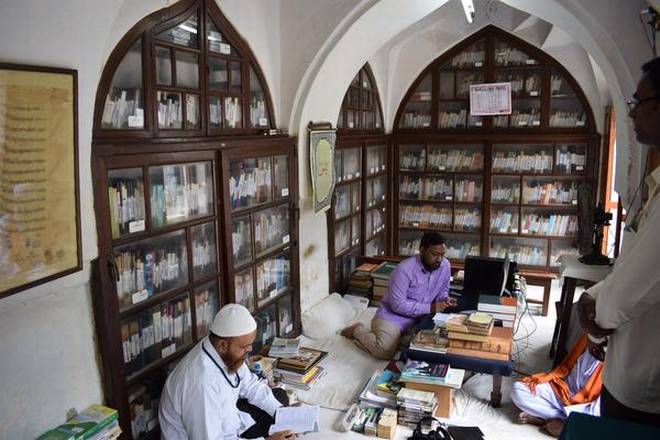Kalaburagi (old ..Gulbarga) , KARNATAKA :

The library of Khaja Bandanawaz Dargah takes you back to the time of the emperors
The city of Gulbarga in Karnataka received much attention when the government decided to rename it as Kalaburagi a few years ago. Tucked away in the corner of freshly-minted Kalaburagi is a library that is seldom mentioned anywhere. Yet, this library, of the Dargah of Khaja Bandanawaz in Gulbarga, is a repository of some of the rarest of books on Tasawwuf (Sufism), Tafsir (Koranic commentary), Fiqh (Islamic jurisprudence), Ilm-e-Kalam (science of discourse), history, linguistics, and biographies of the Sufis of yore.
Operating out of a remote corner in the mausoleum complex, the library is not known to many people, except scholars researching Islam or Sufism. But that is going to change soon, thanks to the current sajjada nashin (custodian) of the Dargah, Syed Shah Khusro Hussaini.
The library is going to be moved to new premises with state-of-the art facilities, which will enable access to its carefully archived resources.
Lac seal
A part of the All India Syed Muhammad Gisudaraz Research Academy, the library has a collection of over 4,000 books and nearly 500 manuscripts. The collection includes about 25 biographies of Khaja Bandanawaz.
Perhaps the most prized item in the collection are three bound volumes of letters titled Khutoot Shahan e Salf (Letters from the Emperors) dating back to 1755. These are 23 letters, each on a page made of cardboard, with a lac seal embedded in a corner. This was the practice followed at that time to authenticate the origin of firmans (decrees) and letters from the imperial court. Some of the letters are from Aurangzeb’s court.
Khaja Bandanawaz Gisudaraz (1321 to 1422 AD), who carried the Chishti order of saints to South India, was a disciple of Hazrat Nasiruddin Chiragh Dehalvi. He moved first to Daulatabad, the capital of India during the Tughlaq era, and then came to Gulbarga in 1400 AD under the reign of Firuzshah Bahamani. Bandanawaz himself wrote a commentary of the Koran titled Tafsir e Multaqit, which ran to two volumes.
One of the volumes was preserved in Kutubkhana-i-Nasiriya, Lucknow. The other ended up in the British Library. An old patron of Gulbarga Library who had migrated to Karachi during Partition noticed it in London and sent a photocopy to the sajjada nashin a few years back. The Dairatul Maarifil Osmania (Institute of Oriental Studies in Hyderabad’s Osmania University) recently published Tafsir e Multaqit.
Sword-patterned decree
The library also preserves the original volume of Awariful Maarif, the famous Persian treatise on Sufism by Shahabuddin Suharwardy, written in the 12th century.
Khaja Bandanawaz wrote its key in Persian and titled it Maariful Awarif. Tafseer e Azeezi, written on silk pages, is yet another marvellous book treasured by the library.
It is a translation of and commentary on the Koran by the 18th-century Delhi scholar, Shah Abdul Aziz. The calligraphy was done about 200 years ago but the text retains the original brightness and beauty. While the Urdu translation runs underneath every line of the original Arabic text, the commentary is on the margins.
An imperial firman that hangs in a glass panel is written in Khat-e-Shikasta (calligraphy mimicking various objects) dating back to the 986th year of the Hijri calendar (corresponding to 1578 AD). Here, the lines of the firman run in the pattern of a sword.
The library is now headed by Dr. Mohamad Qamaruddun, an Arabic and Persian scholar from Bihar. Qamaruddin says the library receives scholars from the Oriental Studies department of universities in the U.S. and the U.K. The library plans to soon prepare a catalogue of the books and microfilms of all manuscripts. It will also digitise some of the more important works.
M.A. Siraj is a Bengaluru-based journalist.
source: http://www.thehindu.com / The Hindu / Home> Books / by M.A. Siraj / October 14th, 2017








